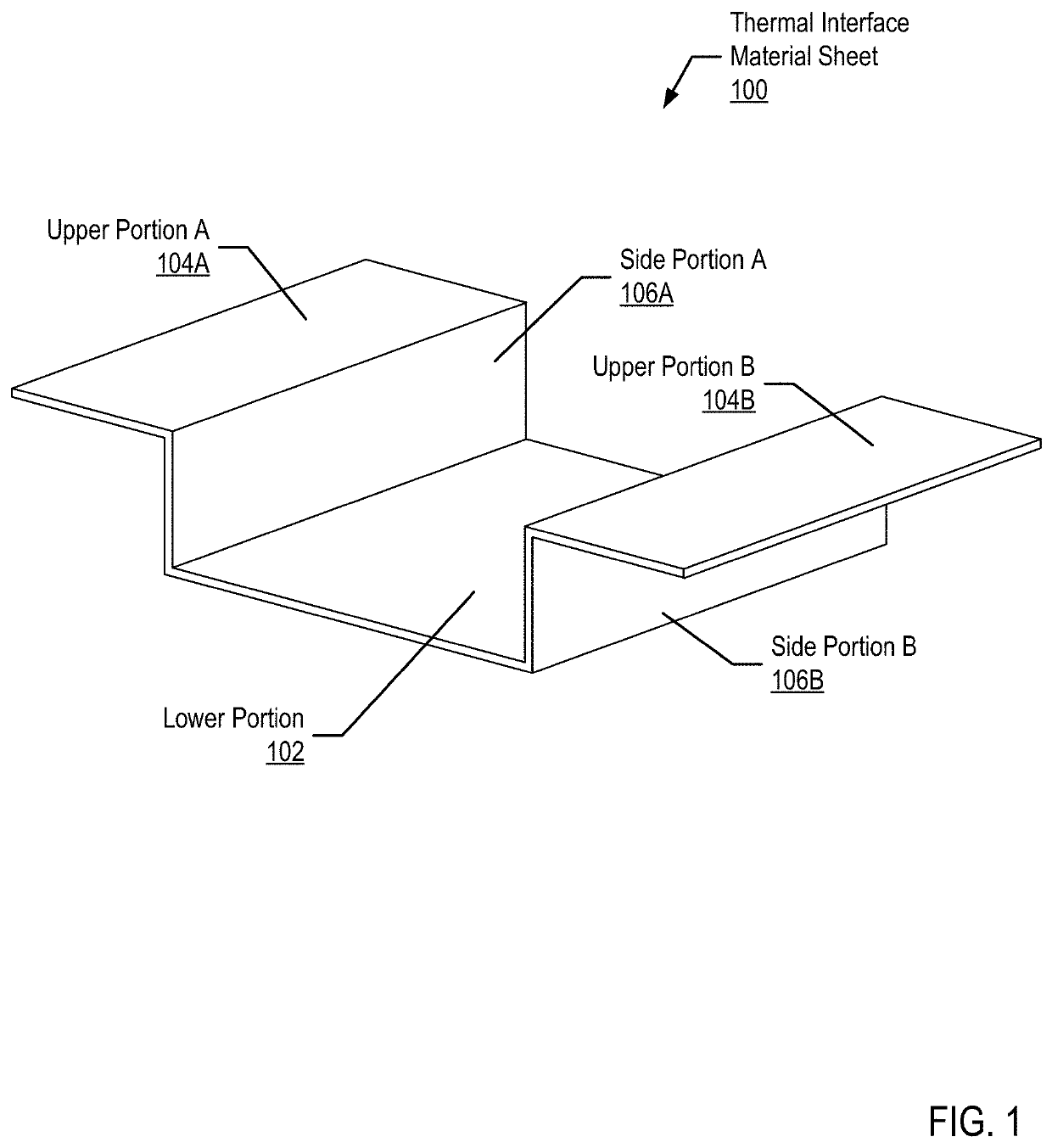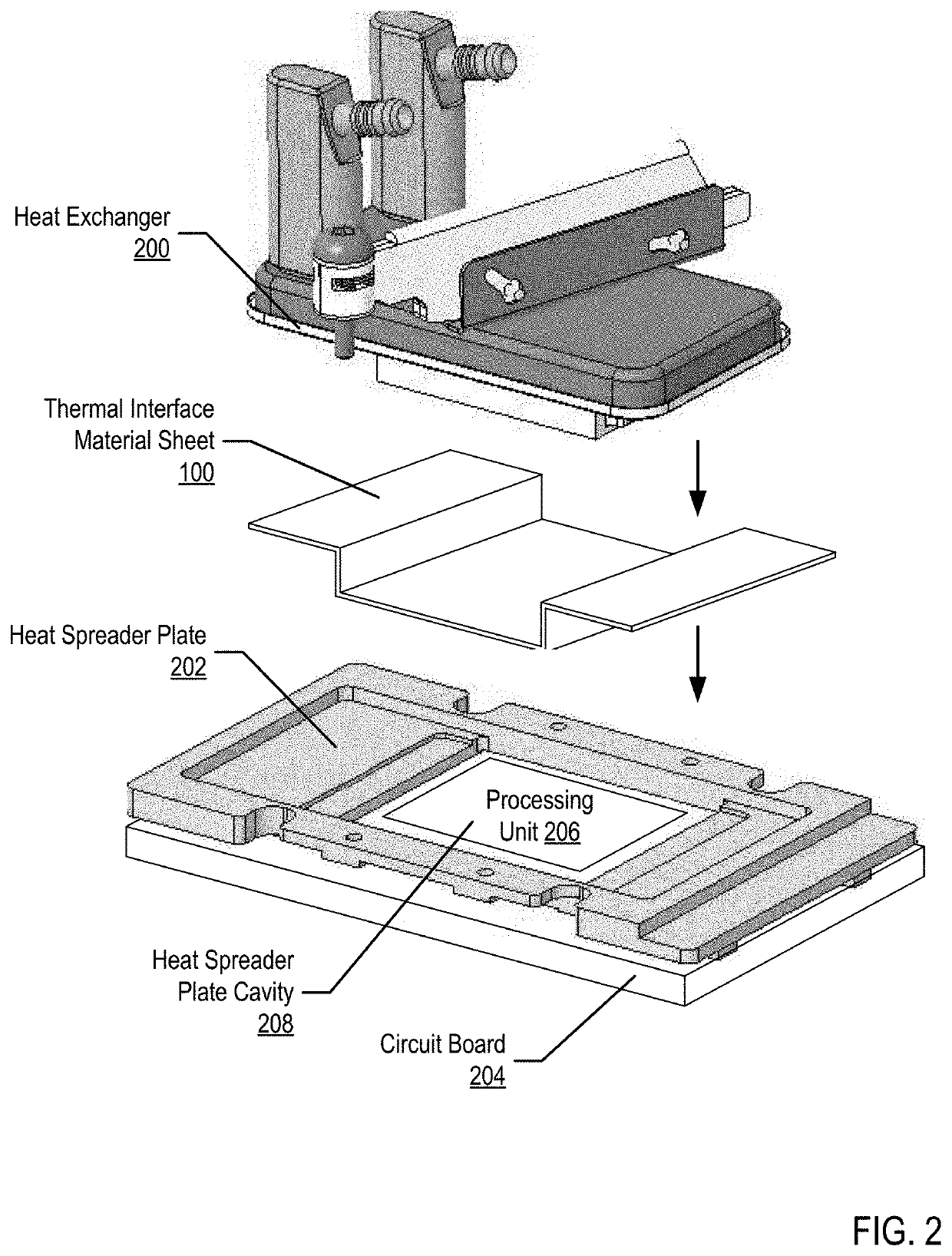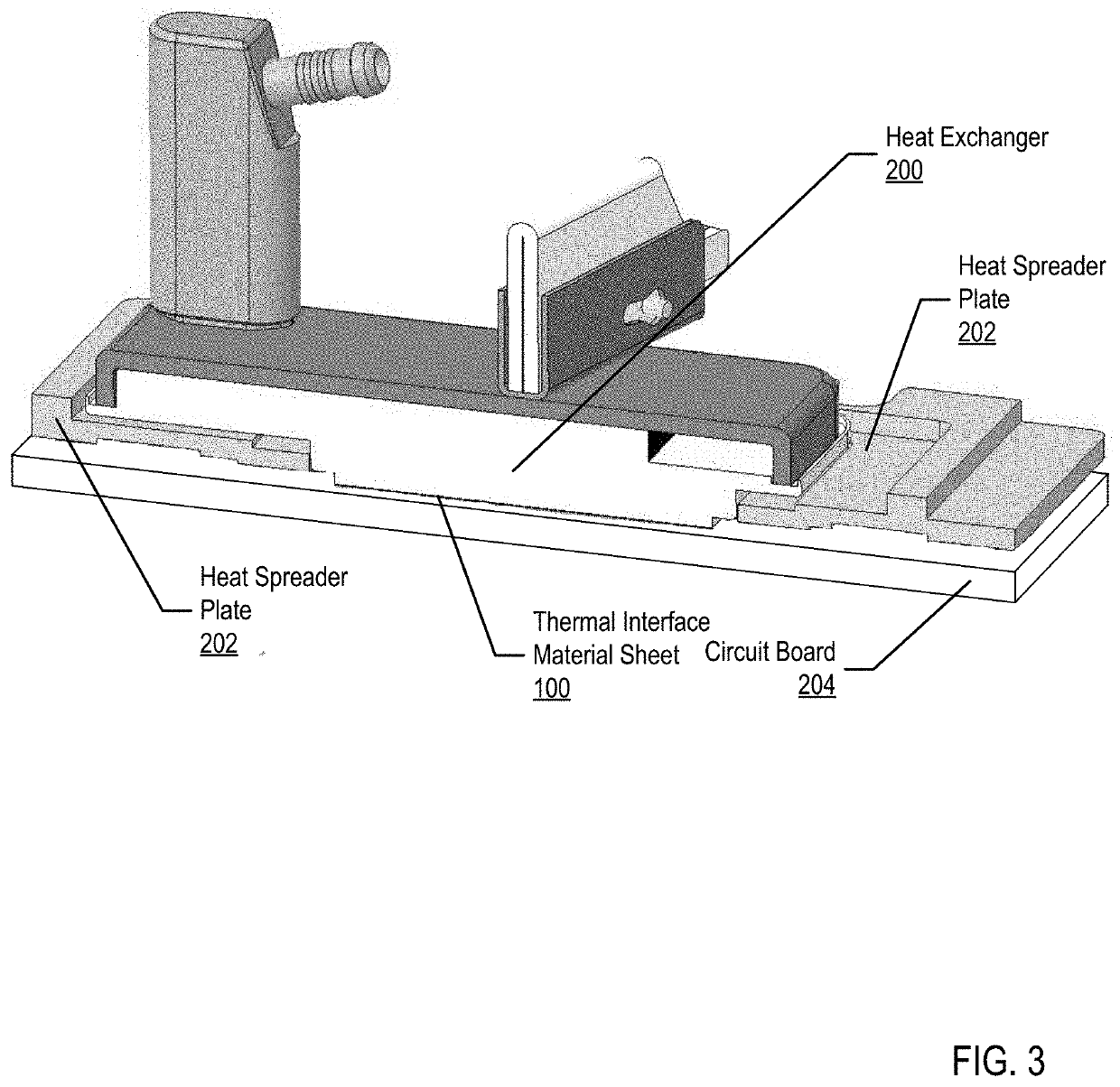Thermal interface material structures for directing heat in a three-dimensional space
a technology of three-dimensional space and interface material, applied in the field of data processing, can solve the problems of computer systems evolving into extremely complicated devices, and achieve the effect of reducing load requirements and increasing heat generation
- Summary
- Abstract
- Description
- Claims
- Application Information
AI Technical Summary
Benefits of technology
Problems solved by technology
Method used
Image
Examples
Embodiment Construction
[0029]FIG. 1 sets forth a diagram depicting an example thermal interface material (TIM) sheet for directing heat in a three-dimensional space according to embodiments of the present invention. As shown in FIG. 1, the TIM sheet (100) includes a lower portion (102), two upper portions (upper portion A (104A), upper portion B (104B)), and two side portions (side portion A (106A), side portion B (106B)).
[0030]The TIM sheet (100) is a single, continuous sheet of thermal conducting material. The TIM sheet may be a single material type, such as a graphite TIM sheet. Alternatively, the TIM sheet may be a composite material, such as a particle or fiber filled silicone and / or acrylate TIM sheet. Additionally, the TIM sheet may be a cured or partially cured elastomer matrix, such as silicone, filled with any number of thermally conductive materials. Such thermally conductive materials may include ceramic particles such as, but not limited to, aluminum nitride, boron, nitride, zinc oxide, or al...
PUM
 Login to View More
Login to View More Abstract
Description
Claims
Application Information
 Login to View More
Login to View More - R&D
- Intellectual Property
- Life Sciences
- Materials
- Tech Scout
- Unparalleled Data Quality
- Higher Quality Content
- 60% Fewer Hallucinations
Browse by: Latest US Patents, China's latest patents, Technical Efficacy Thesaurus, Application Domain, Technology Topic, Popular Technical Reports.
© 2025 PatSnap. All rights reserved.Legal|Privacy policy|Modern Slavery Act Transparency Statement|Sitemap|About US| Contact US: help@patsnap.com



